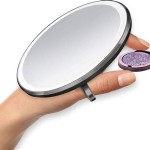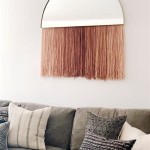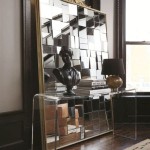How To Wire Vanity Mirror Lights
Installing vanity mirror lights can significantly enhance the functionality and aesthetics of a bathroom. This guide provides a comprehensive walkthrough of the wiring process, ensuring a safe and successful installation. Before beginning any electrical work, always ensure the power is turned off at the breaker box for the circuit you will be working on. Verify power is off using a non-contact voltage tester.
Planning and Preparation
Proper planning is crucial for a smooth installation. Begin by determining the type of vanity light fixture being installed. Different fixtures may have specific wiring requirements. Check the manufacturer's instructions for detailed guidance. Measure the distance between the light fixture's junction box and the power source. This determines the necessary wire length. Gather essential tools including wire strippers, wire connectors, electrical tape, a screwdriver, and a voltage tester.
Understanding the Electrical Connections
Most vanity light fixtures operate on a standard 120-volt circuit. The fixture will typically have three wires: black (hot), white (neutral), and green or bare copper (ground). The electrical box in the wall should also have these three wires. Understanding this color-coding is critical for safe and correct wiring.
Wiring the Junction Box
With the power off, carefully remove the existing light fixture if applicable. Expose the wiring in the junction box. Using wire strippers, remove approximately ½ inch of insulation from the ends of each wire coming from the wall and the light fixture. Connect the wires according to their color coding: black to black, white to white, and green/bare copper to green/bare copper. Use wire connectors to secure each connection, twisting them clockwise until snug. Ensure no bare wire is exposed outside the connectors. Tuck the wires neatly back into the junction box.
Mounting the Fixture
Once the wiring is complete, carefully mount the light fixture to the wall or mirror according to the manufacturer's instructions. Securely attach the fixture using appropriate screws and mounting hardware. Ensure the fixture is level and stable.
Connecting to the Power Source
If a dedicated circuit for the vanity light doesn't exist, one may need to be added. This typically involves running a new cable from the electrical panel to the junction box. This task is best handled by a qualified electrician. If connecting to an existing circuit, ensure the total amperage of all fixtures on the circuit does not exceed the circuit breaker rating.
Testing the Installation
After completing the wiring and mounting, turn the power back on at the breaker box. Test the light fixture by turning it on. If the light functions correctly, the installation is successful. If the light does not work, immediately turn the power off at the breaker and recheck all connections.
Grounding Considerations
Proper grounding is essential for electrical safety. Ensure the ground wire from the fixture is securely connected to the ground wire in the junction box. If the junction box is metal and not grounded, a grounding pigtail should be connected between the box and the ground wire. This provides a path for fault currents to flow safely to ground, preventing electrical shock.
Working with GFCI Outlets
In bathrooms, building codes often require the use of Ground Fault Circuit Interrupter (GFCI) outlets. These outlets provide additional protection against electrical shocks in damp environments. If the power source for the vanity light is a GFCI outlet, ensure the outlet is functioning correctly after the installation by testing the reset button.
Using LED Vanity Lights
LED vanity lights are becoming increasingly popular due to their energy efficiency and long lifespan. When wiring LED lights, follow the manufacturer's instructions carefully. Some LED drivers may have specific wiring requirements. Ensure the power supply is compatible with the LED lights.
Working with Different Switch Types
Vanity lights can be controlled by various switch types, including single-pole, three-way, or dimmer switches. The wiring process will differ slightly depending on the switch type. Consult a wiring diagram specific to the switch type being used for proper connection. For more complex switch configurations, consulting a qualified electrician is recommended.

Bathroom Fan And Shaver Mirror Light Question Diynot Forums

Safety Check For Vanity Mirror Wiring Doityourself Com Community Forums

29 Best Diy Vanity Mirror Ideas
Bathroom Light And Fan Wiring Diynot Forums

2 Ways To Wire Led Bathroom Mirror Hauschenhome

Wiring For Diy Vanity Mirror Under 150 In One Day

How To Wire Led Mirror With Touch Switch

Diy Led Mirror Installation Personal Tips And Review
Any One Good With Electrics And Advise How To Connect My New Bathroom Mirror Avforums

Installing An Electric Led Mirror In A Bathroom Fused Connection Unit Fcu Spur Basin Zones








